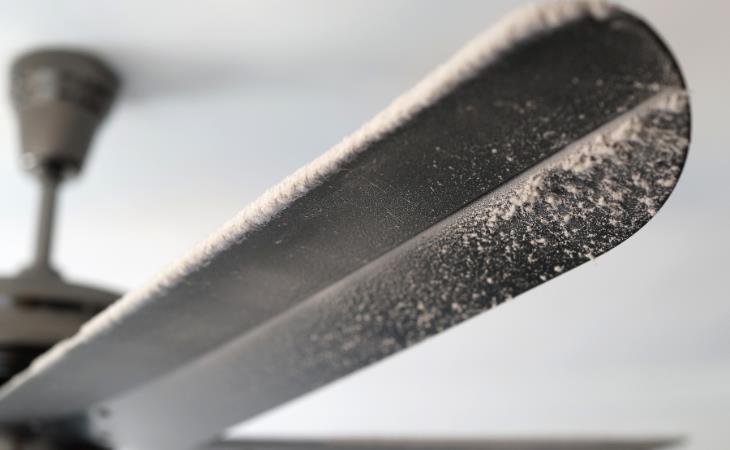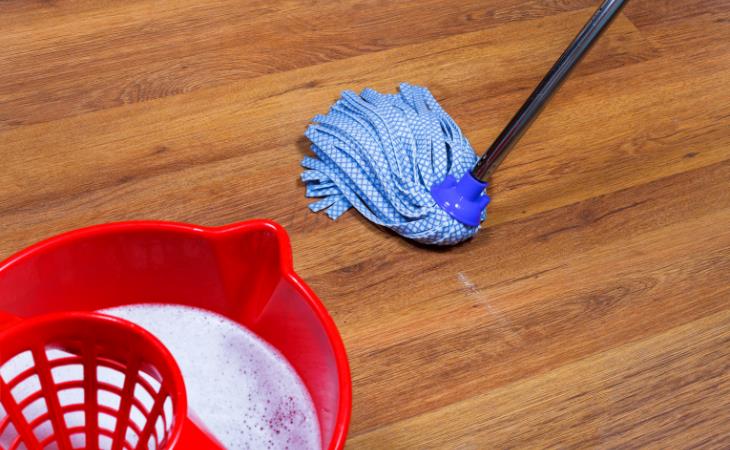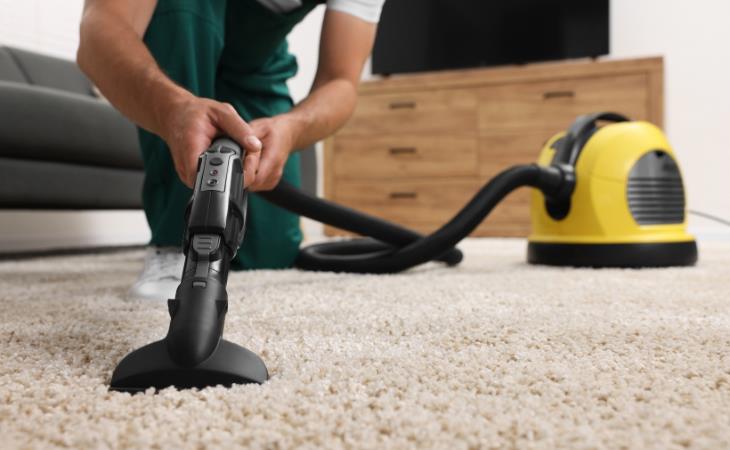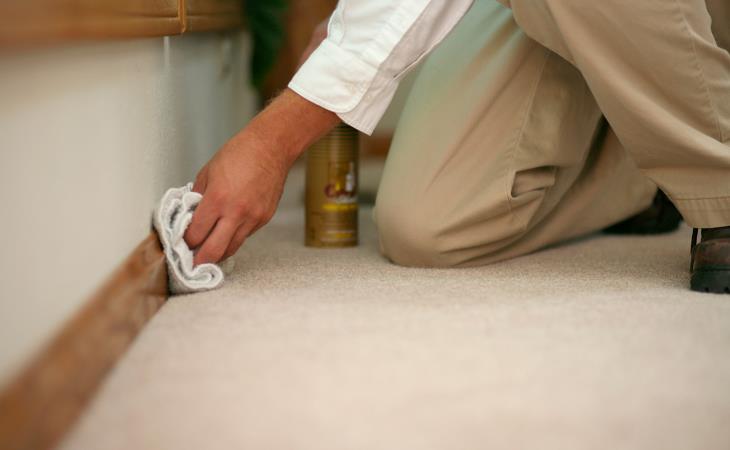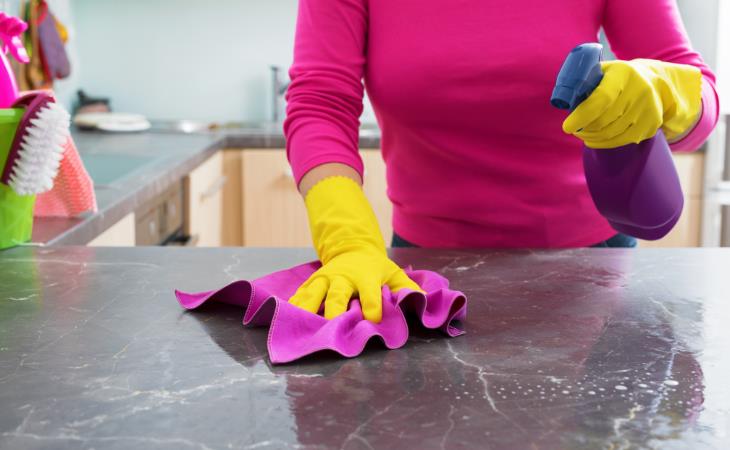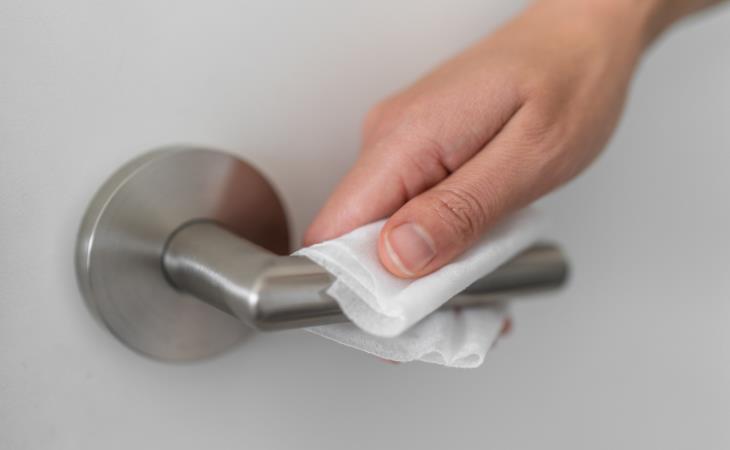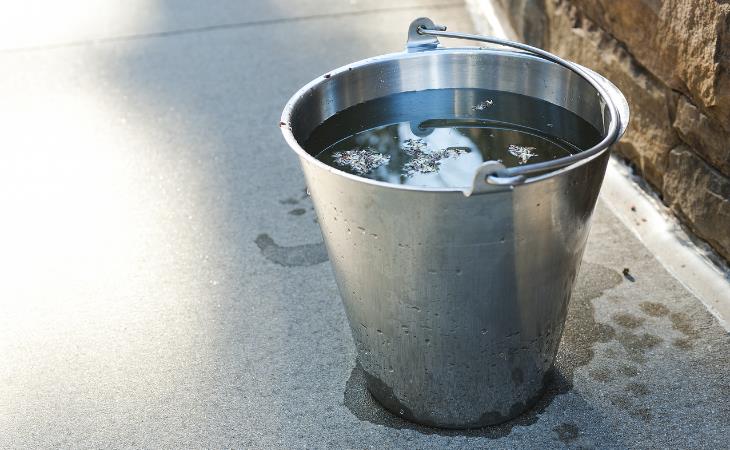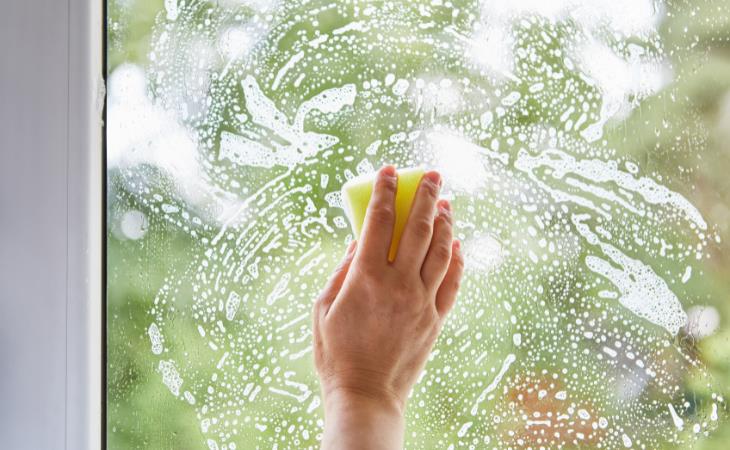Kick off your spring cleaning routine by starting at the ceiling and working your way down. Taking this approach prevents dust and grime from entering previously cleaned areas, and ensures thorough sanitation across all surfaces.
2. Mopping floors with laundry pods
The trend of blending laundry pods with hot water for floor cleaning has gained traction lately, promising to eliminate stains and leave floors sparkling clean. However, this practice is strongly discouraged due to potential hazards. Homeowners should exercise caution when mixing cleaning agents with different chemical compositions, as this may lead to surface damage and emission of harmful vapors. Moreover, abrasive components in some cleaners can mar the surface, leaving behind a slippery residue that compromises safety. Also, laundry detergents may contain gritty particles such as salt, which can irreversibly scratch floors.
3. Using an all-purpose cleaner everywhere
Experts say that while many surfaces respond well to all-purpose cleaning solutions, certain items, such as sofas, curtains, and carpets, require specialized cleaning agents for effective results. It's a common oversight to use the wrong cleaner, which leads to ineffective stain removal or even worsens the problem.
Inspect your furniture for cleaning code tags, which are generally found beneath couches, to ensure you have the proper fabric and upholstery cleaners. Different codes dictate specific cleaning methods: Dry cleaning or water-free solvents for Code S, water-based solvents for Code W, and both water-based and solvent-based options for Code W/S. Code X items should be entrusted to professional cleaners. This rule applies to non-upholstered items as well; always check tags and manufacturer directions before using common cleaning chemicals.
4. Using the same cloth for the whole home
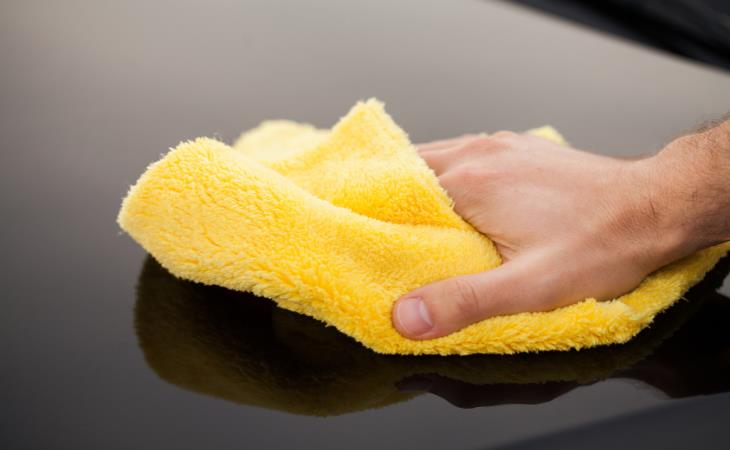
Many homeowners make the mistake of using a single cloth to clean the entire house during a cleaning spree. However, this approach can backfire as it tends to spread bacteria, dust, dirt, and grime rather than eliminate them. It also creates a risk of transmitting bacteria from the bathroom to the kitchen surfaces when the surfaces are in use.
To address this issue, experts suggest dedicating special clothes for each room. An effective tip for sustainable cleaning is to repurpose old clothing as dedicated cleaning cloths. Professional cleaners often abide by a color-coded rule: blue for the toilet, pink for the sink, green for general cleaning, and yellow for dusting.
5. Trying to clean everything in one go
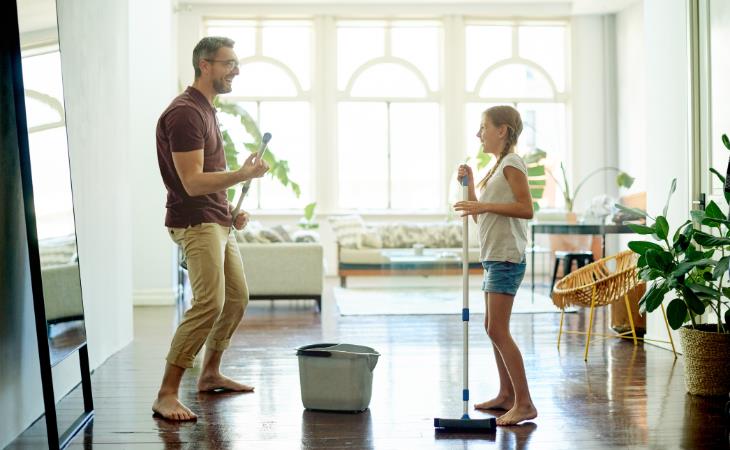
Avoid overwhelming yourself by attempting to finish all your spring cleaning tasks in one go, which can be both intimidating and impractical. Instead, divide your cleaning schedule into bite-sized sections for each room for a more thorough and less rushed approach. Cleaning experts advise avoiding attempting to tackle the most difficult areas of your home at the same time during spring cleaning. Divide your daily cleaning and decluttering tasks into brief 10-minute intervals to make the process more manageable.
6. Dusting and vacuuming the wrong way
The choice between dusting and vacuuming first can be a tricky aspect of cleaning, heavily influenced by the specifics of the room and its contents. If possible, choose vacuuming first, using techniques such as tiny brushes or crevice attachments to gather the majority of dust and debris. Traditional dusting methods tend to disperse dust and allergens, worsening air quality issues. However, for items unsuitable for vacuuming, such as delicate ornaments or glassware, it's advisable to dust them before tackling the rest of the area. To prevent dust from spreading through regular movement, vacuum immediately after dusting with a cloth.
7. Neglecting nooks and corners
Not many of us pay attention to those overlooked places, such as the baseboards or the higher reaches of your extractor fan, during our spring cleaning spree. It's easy to let these areas slip through the cracks in the flurry of our cleaning tasks, after all. Ignoring them might result in a buildup of dust and filth, and can affect your indoor air quality. So, don't forget to include these frequently overlooked areas on your cleaning checklist this spring.
8. Using vinegar on granite or marble
It's of utmost importance to thoroughly test the compatibility of cleaning products with the diverse surfaces in your home to avert potential damage. Take, for instance, the widely used natural cleaner vinegar, which, if applied to surfaces like granite or marble countertops, can cause undesirable damage such as staining and erosion. Do thorough research for maintaining your countertops.
9. Skipping high-touch surfaces
Many people overlook this aspect of cleaning, possibly because we easily forget the smaller details when taking up other, seemingly more important cleaning tasks. However, it's necessary to maintain a hygienic living environment. Pay special attention to regularly cleaning and disinfecting high-touch surfaces such as doorknobs, light switches, and fridge and microwave handles to prevent the spread of germs and reduce the risk of illness transmission among occupants.
10. Using too much water
To protect surfaces such as wood or electronics during cleaning, limit water exposure to avoid potential damage. Choose a damp cloth over a wet one, and make sure that it's properly wrung out before use. This precaution should be taken throughout the cleaning process, from the first application of the cleaning solution to the final rinse.
11. Making glass appear dirtier
When it comes to window cleaning, the primary focus is often on restoring the glass's clarity. Ignoring the broader scope of aesthetics and cleaning requirements, however, may unintentionally enhance the impression that they are dirty. Before beginning the cleaning process, professionals recommend completely removing any dirt from the window frames with either a dry cloth or a vacuum. This step must be taken to avoid accidental smearing of dirt and dust during cleaning, which could increase the overall messiness.

